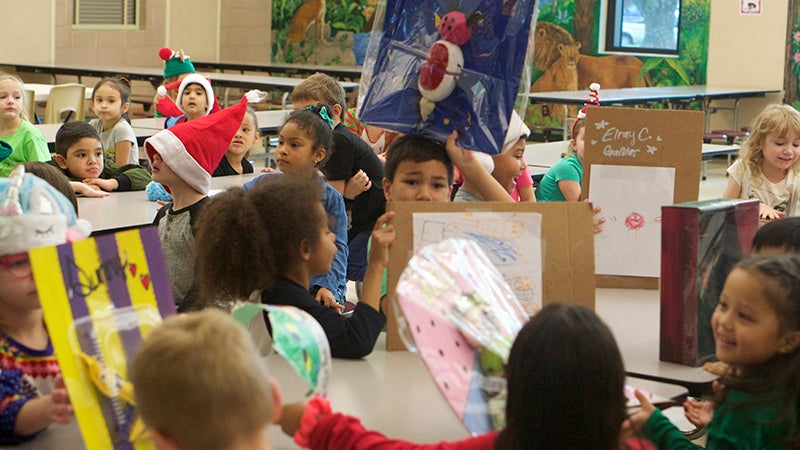CASSANDRA JENKINS — Review the pros, cons of changing school year calendar
Published 12:20 am Wednesday, June 10, 2020

- Helena Park Elementary students play with their handmade monsters from Santa in December 2019 in the cafeteria. (Cassandra Jenkins/The News)
|
Getting your Trinity Audio player ready...
|
School districts across the nation are currently facing some of the toughest decisions.
As graduation ceremonies begin to wrap up in the region, students are heading into summer with little idea of when or how they will return.
Nederland ISD School Board President Micah Mosley gave the community a glimpse of the decisions school districts everywhere are faced with making.
In a Facebook post last week, Mosley asked NISD students, parents and community members to set aside personal opinions on the coronavirus itself and focus on the future of the school year.
“Many of you have seen or heard of school districts considering changes to their 2020-2021 school calendars,” he opened. “The Texas Education Agency has implied that they may not be waiving school days like they did last year.
“The TEA is stressing for districts to discuss and consider calendar options in case there is a coronavirus disruption in the next school year and schools are shut down again.”
Mosley presented some of the many ideas and variants that are currently under consideration. Here are those choices presented with a compiled list of pros and cons:
- Intersessional Calendar — A 180 day calendar with intermittent breaks for targeted remediation with a subset of student.
- Pros = Longer holiday breaks, offers flexibility, extra days for makeup times
- Cons = School starts earlier in August and extends further into the summer months.
- Traditional Calendar — A 180-day calendar with three-month summer vacation, regularly built in make-up days.
- Pros = Students are already familiar with the schedule, longer summer, know what to expect.
- Cons = Make-up dates may extend school into the summer, does not provide back-up plan in case of coronavirus return, no additional days
- Hybrid model — Traditional calendar, but with a blend of at-home virtual learning a few days a week coupled with a few days on campus. May include alternating students where 50 percent on campus at one time.
- Pros = Social distancing manageable with alternating schedule,
- Cons = Changing schedule, difficulty in child management for working parents, difficult for students unsuccessful with online learning
- Full year redesign — A revamped 7×6 week’s calendar.
- Pros = Flexibility to redesign for individual district needs
- Cons = Short amount of time to redesign schedule before school starts in August
- Tack on 30 minutes to each day — Maintains traditional calendar. “Banks” makeup days (1 banked day created each 3 weeks). Could be 15 minutes on front and back end of the existing day or just 30 minutes on the end of the day.
- Pros = Use the banked days if school has to shutdown. If the banked days aren’t needed, summer break starts May 15.
- Cons = Longer school days, pushes back other extracurricular activities such as sports or UIL, making for less home/down time.
Mosley’s post asking for feedback garnered 571 comments by midday Tuesday, with many expressing interest in options two and five.
In his personal opinion, Mosley expressed interest in the structure, flexibility and benefits of option five, tacking on 30 minutes to the end of each day.
“It’s an option that provides minimal overall disruption,” he said. “It gives us some banked makeup days in case school is closed, and school gets our earlier in May if we never have to shutdown.”
Cassandra Jenkins is a news reporter at The Port Arthur News. She can be reached at cassie.jenkins@panews.com.





